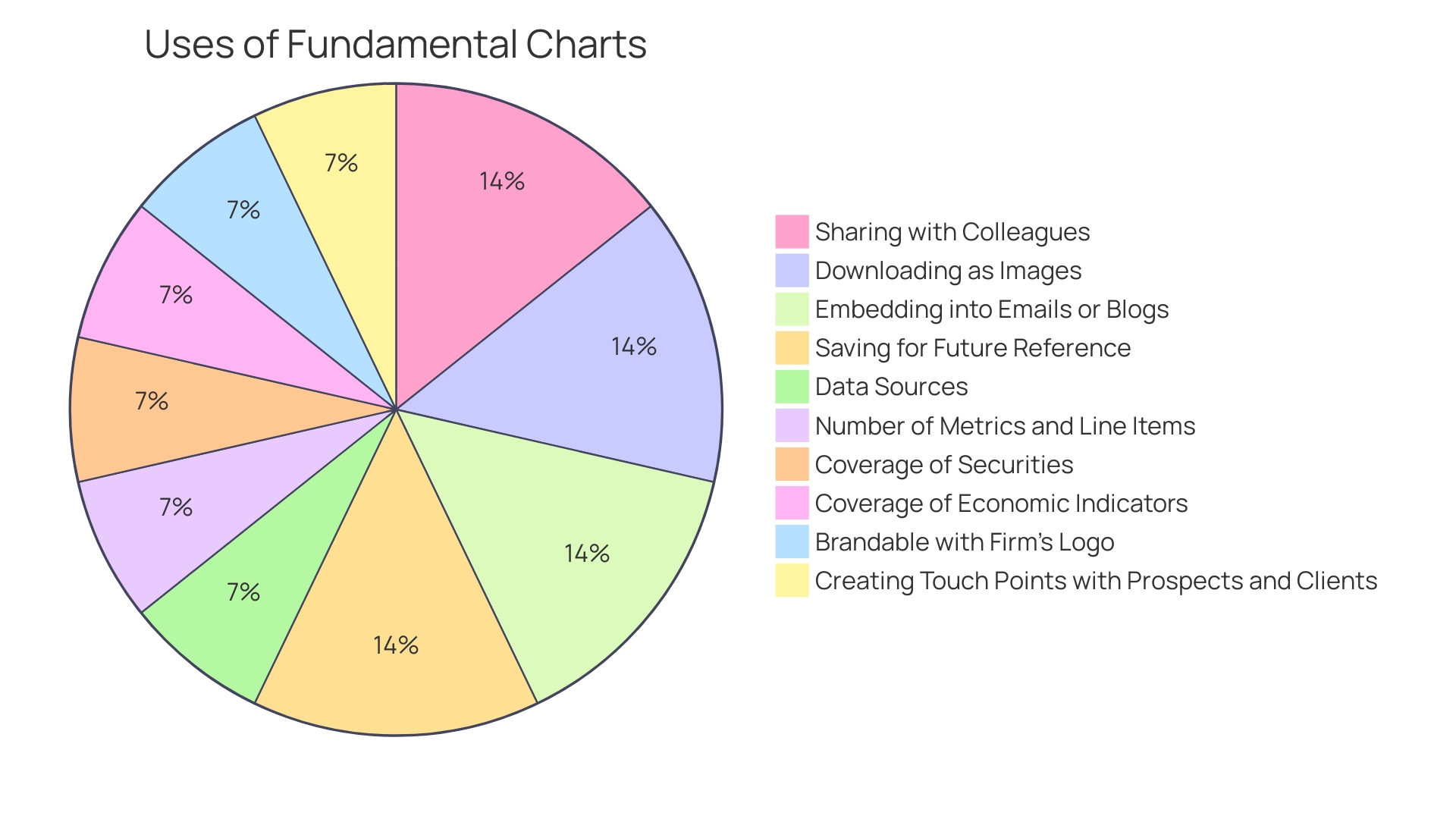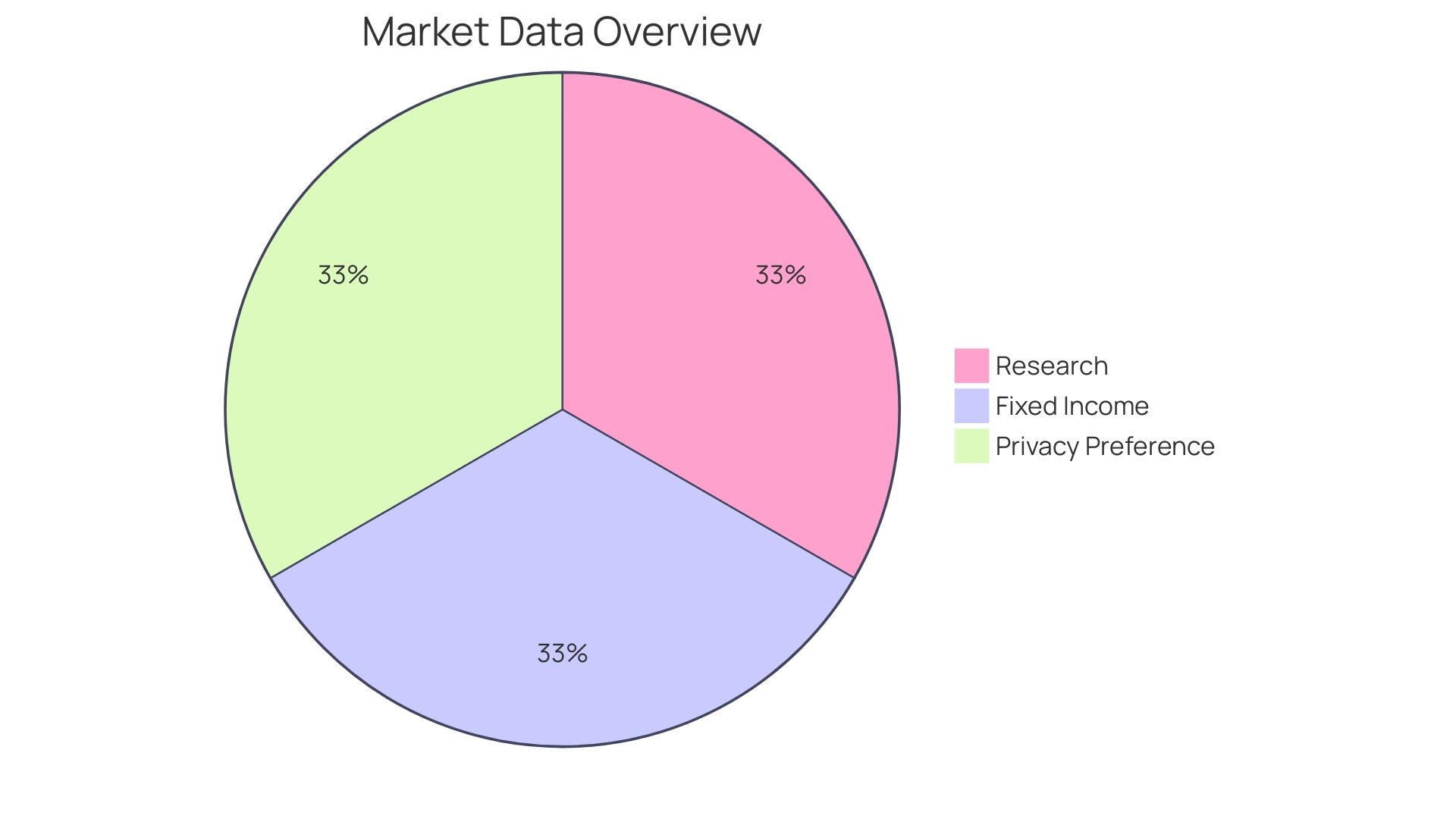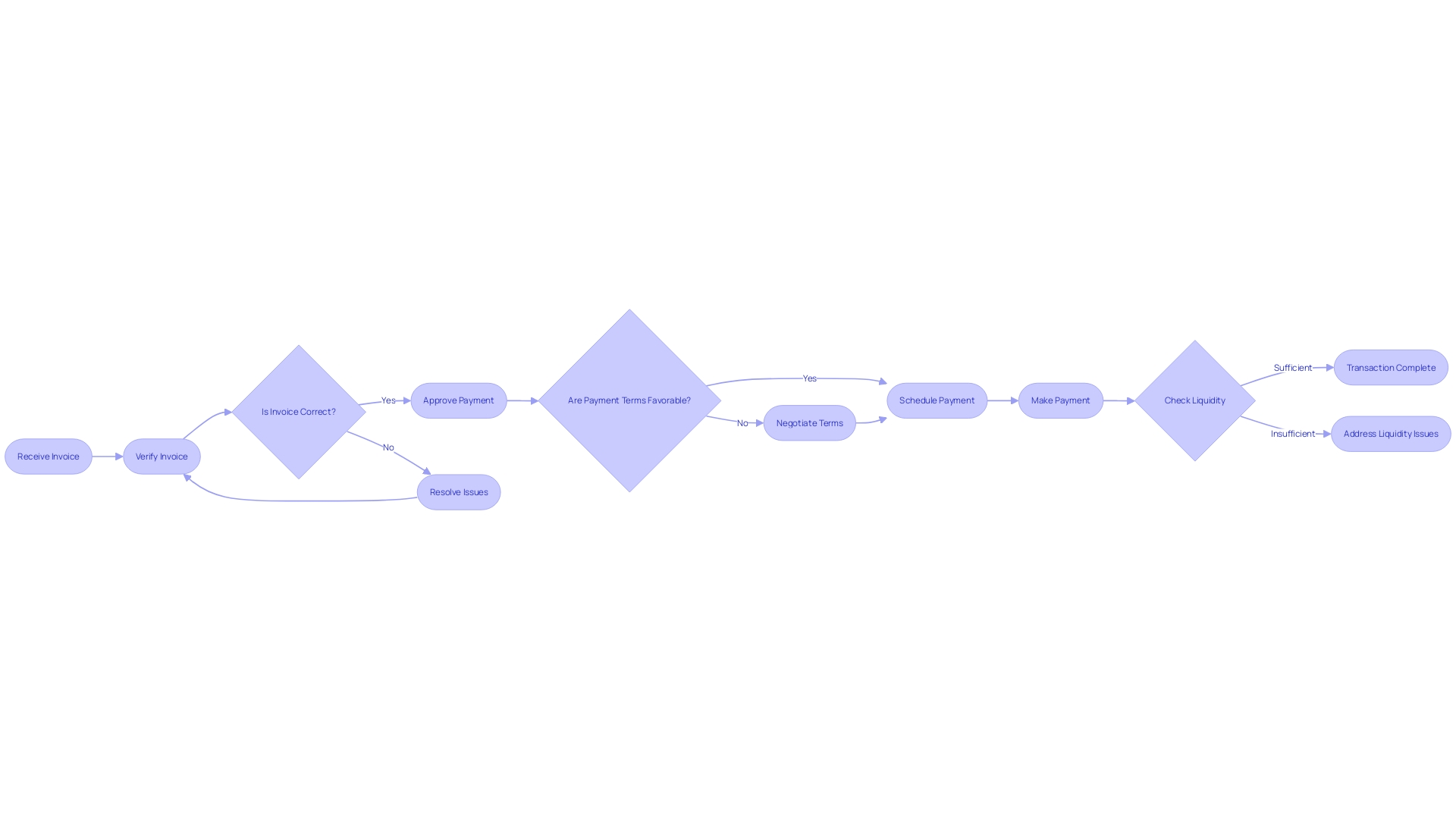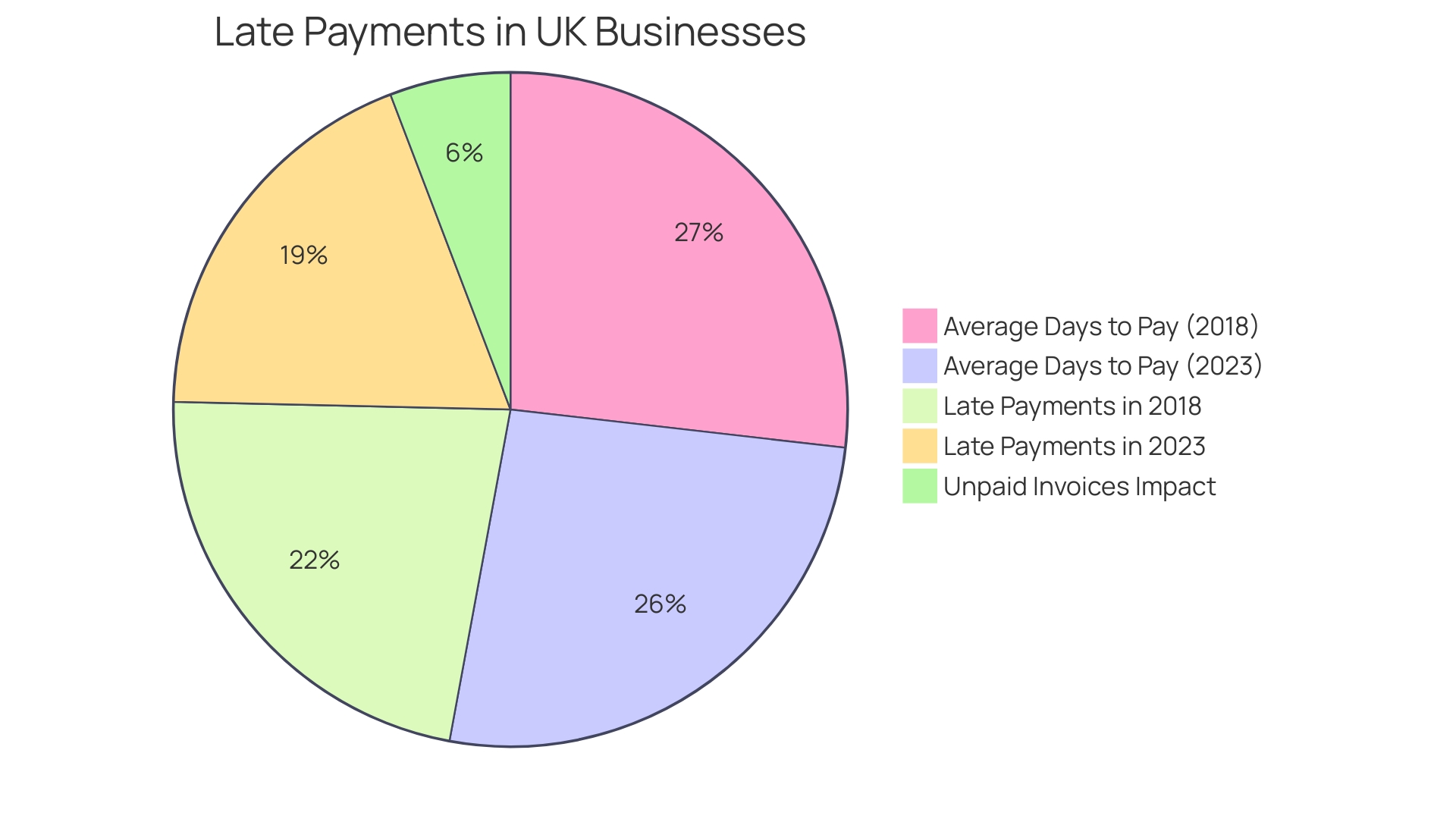Introduction
Accounts Payable (AP) ratios serve as essential indicators within financial analysis, providing insights into a company's liquidity, financial health, and operational efficiency. These ratios, expressed as percentages, simplify complex financial data and enable businesses to compare themselves against industry benchmarks or historical performance. By mastering the calculation and interpretation of AP ratios, businesses can maintain a robust financial framework, effectively manage cash flow, and adhere to strategic financial objectives.
In this article, we will delve into key AP ratios such as Days Payable Outstanding (DPO) and the Accounts Payable Turnover Ratio, explore their significance in financial analysis, and discuss best practices to improve these ratios. Additionally, we will highlight the importance of industry benchmarks and comparisons in evaluating a company's fiscal health and operational efficiency. By understanding the intricacies of AP ratios and implementing practical strategies, businesses can make informed decisions, optimize working capital, and ensure long-term success.
What is Accounts Payable in Ratio Analysis?
Accounts Payable (AP) serves as a vital indicator within financial analysis, reflecting the obligations a business has to pay off its creditors in return for supplies or services received on credit terms. Through the lens of ratio analysis, AP provides insights into a company's liquidity—its ability to meet short-term obligations—as well as its overall financial health and operational efficiency. These ratios manifest as percentages which simplify complex financial data into actionable insights, enabling businesses to compare themselves against industry benchmarks or historical performance. Moreover, they can be critical in identifying financial red flags, guiding strategic decision-making, and assessing creditworthiness. For instance, a high AP turnover ratio might indicate a company is efficiently using its credit facilities and effectively managing its cash flow, while a low ratio could signal potential liquidity issues. As such, mastering the calculation and interpretation of AP ratios is essential for maintaining a robust financial framework, ensuring the company stays agile in managing its cash flow and in adhering to strategic financial objectives.
Key Accounts Payable Ratios
To effectively gauge the financial health of an organization, especially in terms of meeting short-term obligations, managing cash flows, and optimizing working capital, it's crucial to delve into the realm of Accounts Payable ratios. These ratios act as a financial compass, guiding stakeholders to understand how well a company is handling its payable obligations. For example, Monday.com has demonstrated how vital these financial indicators can be. They achieved quick free cash flow positivity by closely monitoring their financial metrics, which is a testament to their efficient growth strategy and focus on gross margin importance.
When considering Accounts Payable ratios, it's not just about calculating numbers but understanding what they reveal about a company's operational efficiency and financial stability. A software company might use these ratios differently compared to a more traditional business. As such, these ratios are standardized, allowing for a fair comparison across the industry, helping to uncover potential financial red flags and guiding strategic decision-making.
In the context of the banking industry, where maintaining strong credit quality is paramount, ratios like 'Net Cash After Operations' have emerged as critical indicators of financial health. This focus on ratios is mirrored by Monday.com's strategic financial analysis, which emphasizes the significance of maintaining a robust gross margin and understanding the nuances of the Cost of Goods Sold (COGS).
The conversation around these financial ratios is further enriched by the latest market movements. For instance, the performance of major stocks such as JPMorgan Chase and Boeing can be better understood by analyzing key financial ratios, thus providing investors and stakeholders with deeper insights into the companies' operational success and challenges.
Ultimately, the objective is to enable businesses to make more informed decisions, prioritize expenditures, and ensure that every dollar spent or saved aligns with the company's broader financial strategy and growth objectives. These financial ratios serve as the backbone of this analytical process, equipping businesses with the necessary tools to thrive in a competitive marketplace.

Days Payable Outstanding (DPO) Ratio
Days Payable Outstanding (DPO) is a critical financial metric that serves as a barometer of a company's cash flow efficiency and its payment dynamics with suppliers. By calculating the average duration that a company takes to settle its invoices, the DPO ratio provides insight into the company's management of its accounts payable. A lengthier DPO may indicate that a company is utilizing its available cash more effectively by delaying payments to suppliers, thus keeping the cash within the business for other strategic uses or investments.
However, while a higher DPO can indeed improve a company's liquidity by extending the time cash remains on hand, it's essential to strike a delicate balance. Overextending payment terms can strain supplier relationships or suggest potential cash flow issues, which could raise concerns among investors and creditors. In turbulent economic times, as evidenced by the tech industry's significant layoffs in 2023, companies are urged to adopt innovative strategies to manage their finances without resorting to staff reductions. This approach not only maintains morale but also supports sustained operational efficiency.
For instance, Procurify's decision to implement salary cuts coupled with a shorter workweek during financial challenges, instead of layoffs, reflects the importance of protecting cash flow while considering the well-being of the workforce. Similarly, strategic cash flow management can prevent the dire consequences of depleted funds, which is a key factor in ensuring long-term business sustainability. Understanding and effectively managing the DPO ratio is, therefore, a crucial aspect of financial analysis and plays a significant role in a company's overall financial health and strategy.
Current Ratio
Understanding the Current Ratio is essential for assessing a company's short-term financial health. This ratio serves as a barometer for a company's ability to pay off its short-term liabilities with its short-term assets. To calculate the Current Ratio, divide the company's total current assets by its total current liabilities. A ratio above 1 indicates that the company has more current assets than current liabilities, suggesting a stronger position to cover short-term debts, including Accounts Payable.
Take, for instance, General Electric, which operates across diverse sectors, from high-tech industrial to financial solutions. Their ability to manage short-term obligations is critical for maintaining operational fluidity across such a broad spectrum. Similarly, Flow Traders, a market maker, prioritizes minimizing risks, highlighting the importance of a solid Current Ratio in ensuring financial safety and longevity.
In the world of investing and financial analysis, the Current Ratio is a pivotal metric. For example, Ares Capital, as a business development corporation, focuses on providing capital to businesses, and a strong Current Ratio is indicative of their ability to manage and allocate resources effectively.
Looking at Johnson & Johnson, a company with an AAA-rated balance sheet, one can infer that a robust Current Ratio contributes to its financial stability, allowing it to maintain investor confidence even through controversies.
Ultimately, the Current Ratio is more than a mere number; it's a reflection of a company's operational efficiency and financial dexterity. It is a litmus test for liquidity and a crucial component in the toolkit of financial analysts, investors, and CFOs alike, enabling them to make informed decisions and maintain financial equilibrium.

Accounts Payable Turnover Ratio
Understanding the Accounts Payable Turnover Ratio is pivotal for maintaining robust financial health and building strong vendor relationships. This metric reveals the frequency at which a company settles its debts with suppliers. To calculate it, divide the annual purchases by the average Accounts Payable balance. A higher ratio indicates swift payment to vendors, which can secure favorable payment terms and discounts. Conversely, a lower ratio might suggest cash flow issues or a strategic decision to use available cash for other investments.
Financial efficiency isn't just about paying off debts; it's about optimizing them. For instance, Delivery Hero streamlined their IT issue resolution process, improving operational efficiency significantly. Similarly, mastering the Accounts Payable Turnover Ratio can lead to a more efficient payment process, enhancing the company's reputation and financial agility.
In the current economic landscape, where late payments persist as a challenge, and the average large business takes 36 days to pay, understanding this ratio is more crucial than ever. The Atradius Payment Practices Barometer highlights the risks of extended credit, with one-third of companies seeing an increase in days-sales-outstanding rates and 6% of receivables written off as uncollectible.
Therefore, maintaining a keen eye on this ratio is not just about compliance, but it's a strategic move to ensure liquidity and operational resilience. As financial institutions increasingly target cash-rich industries, ratios like 'Net Cash After Operations' become essential indicators of a company's financial wellbeing. The Accounts Payable Turnover Ratio plays a similarly critical role in evaluating a company's ability to manage its cash flow effectively.
Calculating the Accounts Payable Turnover Ratio
To adeptly manage a company's financial health, understanding key ratios like the Accounts Payable Turnover Ratio is imperative. This ratio is vital for assessing how efficiently a business is paying its suppliers and can illuminate the speed at which cash is flowing out of the business. To compute this ratio, take the cost of goods sold, which is clearly listed on your income statement, and divide it by the average Accounts Payable balance over a specified period. You can determine the average Accounts Payable balance by summing the starting and ending balances within that period and dividing by two. For example, if a business has a cost of goods sold of $500,000 and an average Accounts Payable balance of $50,000, the Accounts Payable Turnover Ratio would be 10. This indicates that the company pays off its suppliers 10 times per year, which can be critical in negotiating terms with vendors and managing liquidity.
Interpreting the Accounts Payable Turnover Ratio
Understanding an organization's Accounts Payable Turnover Ratio is crucial for assessing its financial efficiency and liquidity. This ratio reflects how swiftly a company pays its vendors, which has direct implications for cash flow management. A swift payment cycle, indicated by a high turnover ratio, is often a mark of financial health, signifying that a company is managing its cash flow efficiently. Conversely, a low ratio may raise red flags about potential liquidity issues or operational inefficiencies, as it suggests a slower pace in settling payables.
An analysis of UK businesses revealed a concerning culture of late payments, with 26% of payments delayed as of July 2023, as reported by the Chartered Institutes of Procurement & Supply. While this is a slight decline from the 31% in 2018, it still highlights the importance of understanding and managing payment practices effectively. Moreover, large businesses averaged 36 days to clear payments, a figure that has remained relatively unchanged over the past five years.
In the realm of Accounts Receivable (AR), the risks are equally pronounced. Data from the 2022 Atradius Payment Practices Barometer indicates an increase in Days Sales Outstanding (DSO) rates for a third of businesses surveyed within the last year, and a troubling 6% of receivables being written off as uncollectible. Such statistics underscore the urgency for businesses to address their AR strategies, especially in the current economic climate.
A real-world example highlighting the importance of efficient process management comes from Delivery Hero, a global leader in local delivery. They faced a significant challenge with around 800 monthly IT requests taking 35 minutes each to resolve, leading to substantial downtime for locked-out employees. By streamlining their IT service delivery, they were able to save 200 hours per month, illustrating the tangible benefits of optimizing operational processes.
In essence, the Accounts Payable Turnover Ratio is more than just a number—it's a reflection of the company's broader financial strategy and operational health. Whether it's maintaining a competitive edge or weathering economic uncertainties, a strong grasp of this ratio and the strategies surrounding it is indispensable for any business aiming for long-term success.

High vs. Low Accounts Payable Turnover Ratio
Understanding the dynamics of Accounts Payable Ratios is essential for a company's financial health. An optimal Accounts Payable Turnover Ratio reflects a company's proficiency in managing its outflows to suppliers. It exemplifies not only a company's capability to fulfill its financial commitments promptly but also signals robust vendor relationships. For instance, Monday.com's remarkable journey to becoming free cash flow positive demonstrates the power of efficient growth and prudent cash management. This is a testament to how a strategic approach to financial operations can lead to more investment opportunities and shareholder value.
However, it's crucial to recognize that a lower ratio might suggest the company is experiencing difficulties in managing its payment responsibilities. This can have adverse effects, such as strained supplier connections. Hershey's experience between 2014 and 2015 is a case in point, where the company faced declining sales and cash flow issues. By addressing these challenges with automation and improved AR processes, Hershey's managed to revitalize its financial health.
Furthermore, recent news has highlighted the importance of financial adaptability. Industrial Alliance's restructuring and StretchDollar's innovative approach to health insurance stipends for small employers are examples of how companies are navigating the financial landscape. These developments underscore the need for CFOs to maintain a vigilant eye on their company's financial ratios, as they can be early indicators of underlying operational efficiency or signals of potential cash flow problems.
In the current economic milieu, as underscored by the Federal Reserve Bank of New York, the goal is to foster a safe and competitive banking system, which entails a sound financial strategy for maintaining strong credit quality and liquidity. Leveraging insights from webinars like 'The Rising Importance of Ratios in Banking' can empower financial leaders to target cash-rich industries and optimize financial operations, ensuring the stability and growth of their organizations.
Best Practices to Improve Accounts Payable Turnover Ratio
To enhance the Accounts Payable Turnover Ratio, businesses must refine their management of Accounts Payable. A key strategy is the negotiation of better payment terms with suppliers, which can extend the payment period while maintaining strong supplier relationships. Leveraging efficient Accounts Payable processes is crucial; adopting electronic invoicing and automated payment systems can streamline operations and minimize manual errors. Regular audits of Accounts Payable balances are necessary to catch discrepancies or errors that could skew the ratio.
Effective cash flow management involves synchronizing payment schedules with incoming cash flows and prioritizing payments based on vendor terms to capitalize on potential discounts. Moreover, cultivating robust supplier relationships through consistent communication, swift issue resolution, and seizing opportunities for early payment discounts can be beneficial. Drawing parallels from diverse case studies, such as the chef-curated prix fixe approach in the restaurant industry or Delivery Hero's IT service delivery improvements, illustrates how innovation and efficiency can be pivotal. These examples highlight the importance of reevaluating expenditures and prioritizing them in alignment with strategic objectives, as well as the significance of measurements in managing and improving processes.
Recent news on the economic landscape, such as the UK small businesses facing slow sales growth and rising late payment times, underscores the necessity for vigilant financial management. The fluctuating business conditions and varying regional employment growth rates reported by Xero's Small Business Index demonstrate the dynamic environment in which Accounts Payable strategies must operate. In light of these challenges, CFOs can apply these best practices to optimize their Accounts Payable turnover and contribute to the overall financial health and agility of their organizations.
Industry Benchmarks and Comparisons
When delving into a company's fiscal health and operational efficiency, it is imperative to place Accounts Payable ratios under the microscope, contrasting them with both industry benchmarks and competitor metrics. Such comparisons can shed light on a company's standing within its sector. For instance, Monday.com has underscored the significance of efficiency in growth and achieving positive free cash flow, highlighting the essentiality of not just revenue but also margins and cash reserves to shareholder value. These elements are critical to understanding a company's financial trajectory.
Recent studies, including a report involving 172 B2B SaaS companies, stress the importance of aligning with industry standards and leveraging financial ratios to diagnose a company's wellbeing. Additionally, UK businesses' payment practices come into play, with approximately 26% of payments being late in 2023, a slight improvement from 31% in 2018. This data underscores the necessity for companies to maintain robust Accounts Payable processes to avoid cash flow disruptions.
To provide a concrete benchmark, consider the average payment duration by large businesses, which has remained fairly constant at around 36 days. Such metrics serve as a barometer for assessing your company's Accounts Payable performance and identifying areas for enhancement or competitive edge. By evaluating and understanding these ratios in the context of the broader industry landscape, companies can make informed decisions that bolster financial resilience and operational prowess.

Conclusion
In conclusion, mastering Accounts Payable (AP) ratios such as Days Payable Outstanding (DPO) and the Accounts Payable Turnover Ratio is crucial for maintaining a robust financial framework, effectively managing cash flow, and adhering to strategic financial objectives. These ratios provide insights into a company's liquidity, financial health, and operational efficiency.
Understanding the dynamics of AP ratios is essential for assessing a company's financial health. The DPO ratio reflects a company's cash flow efficiency and payment dynamics with suppliers. Striking a balance is key to avoid strained relationships or cash flow issues.
Effective cash flow management is crucial for long-term sustainability.
The Current Ratio is a key metric for assessing short-term financial health. A ratio above 1 indicates a stronger position to cover short-term debts, including Accounts Payable. It reflects a company's operational efficiency and financial dexterity, enabling informed decision-making.
The Accounts Payable Turnover Ratio is pivotal for financial health and strong vendor relationships. A higher ratio indicates swift payment to vendors, securing favorable terms and discounts. Efficient payment processes and cash flow management contribute to liquidity and operational resilience.
To improve the Accounts Payable Turnover Ratio, businesses should refine their management of Accounts Payable. Strategies such as negotiating better payment terms, adopting electronic invoicing and automated payment systems, and prioritizing payments based on vendor terms can streamline operations and minimize errors. Cultivating robust supplier relationships through communication and swift issue resolution is also beneficial.
Comparing AP ratios with industry benchmarks and competitor metrics provides insights into a company's standing within its sector. Evaluating and understanding these ratios in the broader industry landscape helps companies make informed decisions, bolster financial resilience, and enhance operational prowess.
In summary, mastering AP ratios, implementing best practices, and leveraging industry benchmarks are essential for maintaining a robust financial framework, optimizing cash flow, and ensuring long-term success. By doing so, businesses can make informed decisions aligned with their financial strategy and growth objectives.




